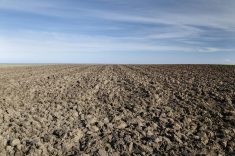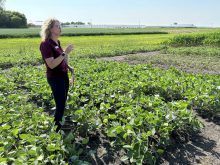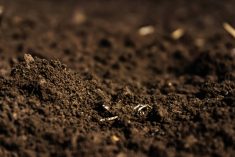Last year may have been a lot of things to a lot of people but one thing it surely wasn’t was predictable.
I mean who foresaw last year’s record-setting high in the U.S. stock market, the plunge in global crude oil prices, Russia’s naked grab of Ukraine’s sovereign territory or the Obama administration’s reaching out to Cuba?
Not me; I was a solid “Wow,” “Whoa,” “Nyet,” and “Really?” on four of the biggest events to rock both the U.S. and its farmers in 2014.
Read Also

CUSMA access key among other trade noise: Seeds Canada panel
Seeds Canada conference panelists say Canada needs to stay focused and wait as U.S. trade and tariff chaos develops, and a Canada-U.S.-Mexico Agreement review looms
This year I’m not taking any chances and announcing 2015’s first big global event, the already announced “International Year of Soils.” The goal of this year-long, worldwide emphasis, explains the UN, is “to increase awareness and understanding of the importance of soil for food security and essential ecosystem functions.”
You would think that everyone in the world might already be aware of how this thin layer of life-giving skin separates humanity’s continuing rise from its complete collapse or that our future is rooted in how we responsibly and sustainably treat the very ground we stand on.
- More from the Manitoba Co-operator: Editorial: Changing how we think
After all, it’s not like soil conservation and soil health are dirty little secrets. The science underpinning both is well known and widespread.
What may be even less secret but far dirtier is how deeply and how long we’ve abused soil. We don’t just treat it like dirt; we treat it as though it’s less than dirt.
For example, according to a 2001 report published by the U.S. Department of Agriculture’s Natural Resources Conservation Service, the yield reduction in Africa due to soil erosion already stands at more than eight per cent.
That irreversible loss doesn’t sound like much if you farm in the black earth country of Illinois or the yards-deep soil of the Pacific Northwest’s Palouse. It’s life and death, however, if you live — or hope to live — in Tanzania or Kenya.
The story is the same in many of the world’s key farming regions. According to the same NRCS study, the “annual loss in productivity” due to soil erosion and degradation in southern Asia is equal to “36 million metric tons of cereal equivalent.”
In U.S. terms, 36 MMT “cereal equivalent” is 65 per cent of the entire 2014-15 American wheat crop.
We in the U.S. have no room to brag. “It is estimated that the total annual cost of erosion… is about $44 billion per year or about $247 per hectare ($100 per acre) of cropland and pasture,” reckoned USDA in 2001.
Taken across the globe, total soil erosion and soil degradation numbers are knee buckling: “The annual loss of 75 billion tons of soil costs the world about $400 billion per year, or about $70 per person per year.”
Changing the perspective doesn’t change the importance of soil or soil erosion. According to USDA, only three per cent of earth’s surface is “considered as prime Class I land… (while) another eight per cent is in Classes II and III. This 11 per cent of land must feed… the 7.6 billion expected in 2020…”
But “high population density is not necessarily related to land degradation; it is what a population does to the land that determines the extent of degradation.”
And population continues to grow; the amount of arable land does not. Writing for the Dec. 22 issue of Agri-Pulse, Marshall Matz, the former counsel for Senate Ag Committee, cited European data that shows the amount of arable land per person today is equal to 0.4 acre, or a patch 40×40 metres. By 2050, with two billion more in population, that tiny parcel will shrink by 30 per cent.
Small? You bet. But it’s bigger than the six inches of thin-and-getting-thinner topsoil that separates success from catastrophe if we don’t take better care of the gift we’ve been given.
We can. We must. Now. This year.
The Farm and Food File is published weekly through the U.S. and Canada. Past columns, events and contact information are posted at farmandfoodfile.com.



















